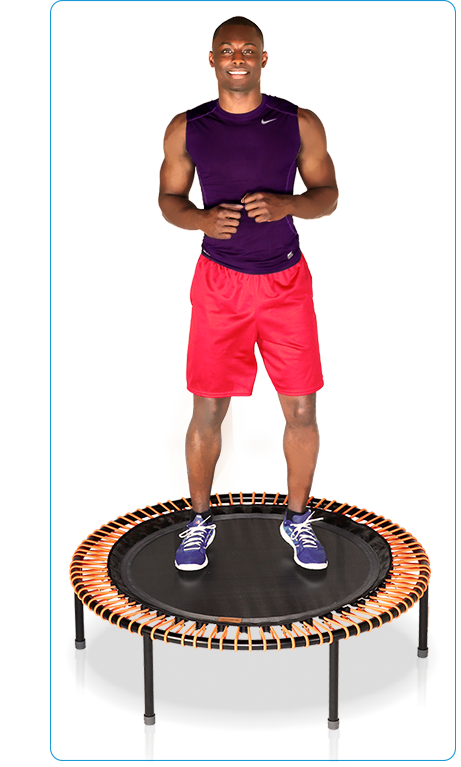
Plyometrics and rebounding are two exercise techniques that focus on explosive movements and power development. Although plyometrics and rebounding may have some similarities, they each have unique characteristics and purposes. This article examines the contrasts and advantages of these two exercises.
Plyometrics, also known as “jump training,” involves fast muscle stretching and contracting to generate maximum force in a short time period during exercise. It is a high-intensity workout. Plyometric exercises aim to improve explosive power, speed, and overall athletic performance. These exercises typically involve jumping, hopping, bounding, and other movements that engage the muscles in a stretch-shortening cycle.
The principle behind plyometrics lies in the concept of storing and releasing elastic energy. When you perform a plyometric movement, such as a depth or box jump, your muscles rapidly stretch and store energy in the tendons and connective tissues. The energy stored during the movement can be released explosively, giving you the ability to generate more force and power. Plyometrics primarily target the fast-twitch muscle fibers responsible for explosive movements, making it an excellent training method for athletes involved in sports like basketball, sprinting, and volleyball.
Rebounding, on the other hand, refers to the act of jumping on a mini-trampoline or rebounder. It is often used as a low-impact aerobic exercise that provides cardiovascular benefits while minimizing joint stress. Rebounding is a physical exercise that involves repetitive bouncing and jumping movements. It engages different muscle groups, such as the legs, core, and upper body. If you are seeking an enjoyable and efficient way to enhance your cardiovascular fitness, balance, coordination, and lymphatic system function, this activity is a great exercise option.
While rebounding can provide cardiovascular benefits, it is less focused on explosive power development compared to plyometrics. Rebounding primarily targets the slow-twitch muscle fibers responsible for endurance, as the repetitive bouncing motion is sustained over a longer period. It also offers low-impact benefits, making it suitable for individuals with joint issues or those who prefer a less intense workout.
Both plyometrics and rebounding offer unique advantages and can be incorporated into a well-rounded exercise routine. Plyometrics are best suited for individuals looking to enhance explosive power, speed, and agility for sports performance or activities requiring quick bursts of energy. Rebounding, on the other hand, is an effective option for individuals seeking cardiovascular fitness, joint-friendly exercise, and overall endurance.
It’s important to note that plyometrics and rebounding should be cautiously approached, especially for beginners or individuals with underlying health conditions. Proper technique, gradual progression, and appropriate warm-up exercises are crucial to minimize the risk of injury. If you’re considering incorporating these exercise techniques into your routine, it’s advisable to consult with a qualified fitness professional to ensure safety and maximize the benefits.

